Shoji, Y.; Tanaka, N.; Mikami, K.; Uchiyama, M.; Fukushima, T. Nat. Chem. 2014, 6, 498-503
Contributed by Steven Bachrach.
Reposted from Computational Organic Chemistry with permission

Reposted from Computational Organic Chemistry with permission
This paper is a bit afield from the usual material I cover but this is an interesting reaction. Shoji and coworkers have prepared the two-coordinate boron species 1,1 and confirmed its geometry by an x-ray crystal structure. What I find interesting is its reaction with CO2, which gives 2 and organoboranes that are not identified, though presumably derived from 3.

M06-2x/6-311+G(d,p) computations support a hypothetical mechanism whereby first a complex between1 and CO2 is formed (CP1), that is 4.4 kcal mol-1 above isolated reactants. Then passing through TS1, which is 4.2 kcal mol-1 above CP1, an intermediate is formed (INT), which is almost 6 kcal mol-1 below starting materials. A second transition state is then traversed (about 1 kcal mol-1 below starting materials), to form an exit complex between 2 and 3, which can then separate to the final products with an overall exothermicity of 10.6 kcal mol-1. The structures of these critical points are shown in Figure 1.
1
(0.0) |
CP1
(4.4) |
TS1
(8.6) |
INT
(-5.7) |
TS2
(-1.1) |
CP2
(-9.0) |
Figure 1. M06-2x/6-311+G(d,p) optimized structures. Relative energy in kcal mol-1.
References
(1) Shoji, Y.; Tanaka, N.; Mikami, K.; Uchiyama, M.; Fukushima, T. "A two-coordinate boron cation featuring C–B+–C bonding," Nat. Chem. 2014, 6, 498-503, DOI: 10.1038/nchem.1948.
InChIs
1: InChI=1S/C18H22B/c1-11-7-13(3)17(14(4)8-11)19-18-15(5)9-12(2)10-16(18)6/h7-10H,1-6H3/q+1
InChIKey=WLUJABFTLHAEMI-UHFFFAOYSA-N
InChIKey=WLUJABFTLHAEMI-UHFFFAOYSA-N
2: InChI=1S/C10H11O/c1-7-4-8(2)10(6-11)9(3)5-7/h4-5H,1-3H3/q+1
InChIKey=CUJVTHUIQVMVHD-UHFFFAOYSA-N
InChIKey=CUJVTHUIQVMVHD-UHFFFAOYSA-N
3: InChI=1S/C9H11BO/c1-6-4-7(2)9(10-11)8(3)5-6/h4-5H,1-3H3
InChIKey=ZJKBFARYTPYYGV-UHFFFAOYSA-N
InChIKey=ZJKBFARYTPYYGV-UHFFFAOYSA-N
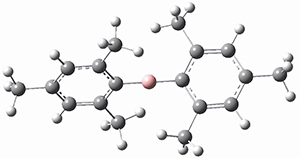
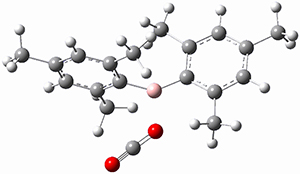
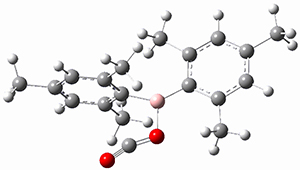
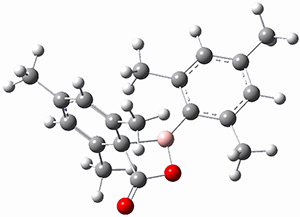
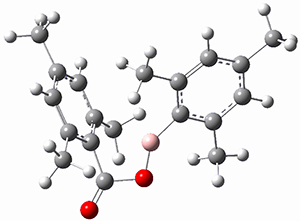
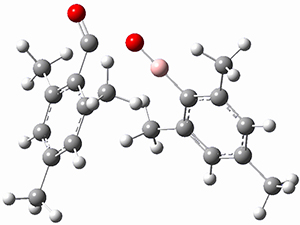

No comments:
Post a Comment